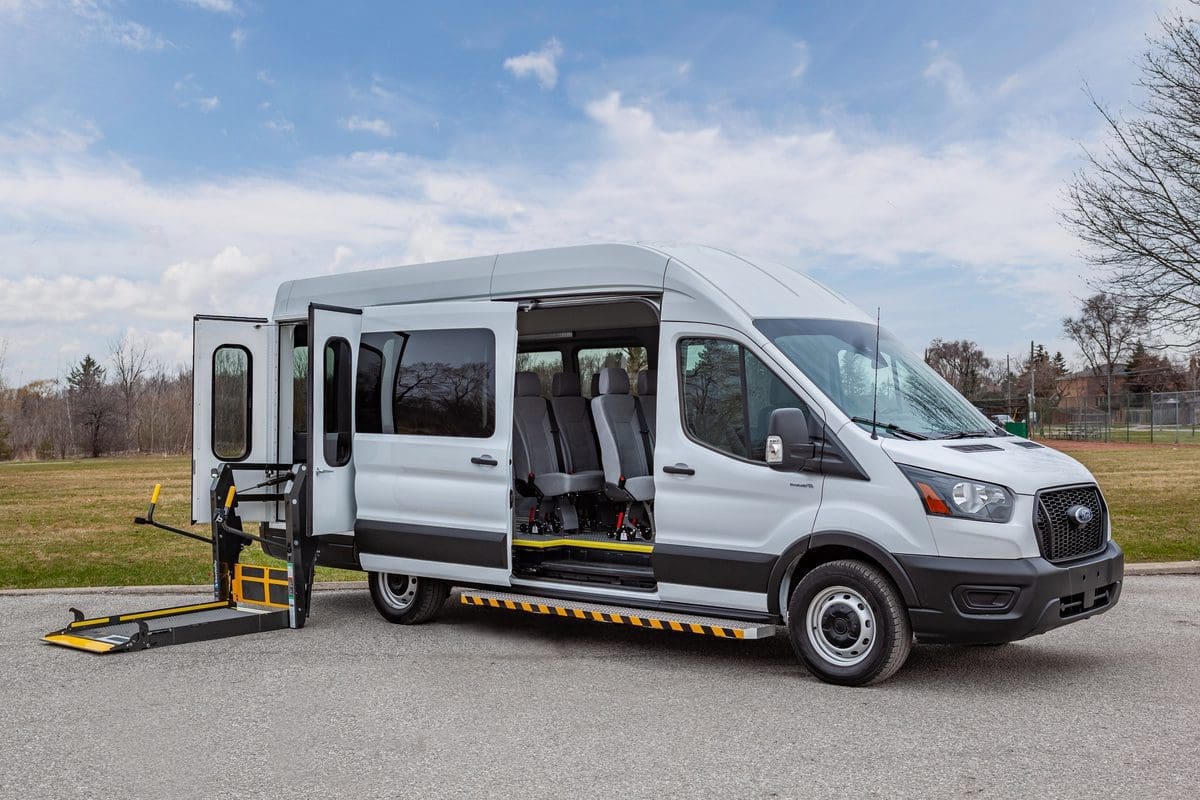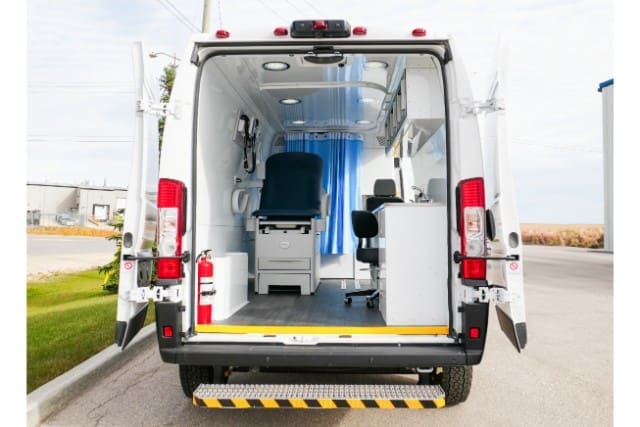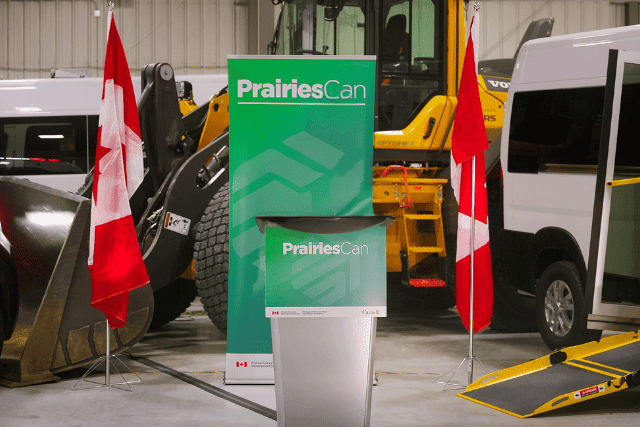Your organization is looking for a wheelchair bus alternative to replace a wheelchair bus, but you’re not sure what type of van will meet your needs.
“We need a vehicle that’s like a bus, but something that isn’t a bus. Buses are too big and expensive to run. Our passengers don’t like the bumpy ride.”
At MoveMobility, we hear this over and over, which leads organizations looking for a wheelchair bus alternative to ask about two of our van options most often used to replace buses: the T6 and the P6.
To help you narrow down a wheelchair bus alternative that may be an option for your program, review the comparison chart below. It’ll help you understand the differences between the T6 and the P6. We’ll also go over the most common applications for each accessible van. No two accessible transport programs are the same, so as you review the chart below, consider how each aspect of each van applies directly to your program. If you have questions, request more information using the button below.
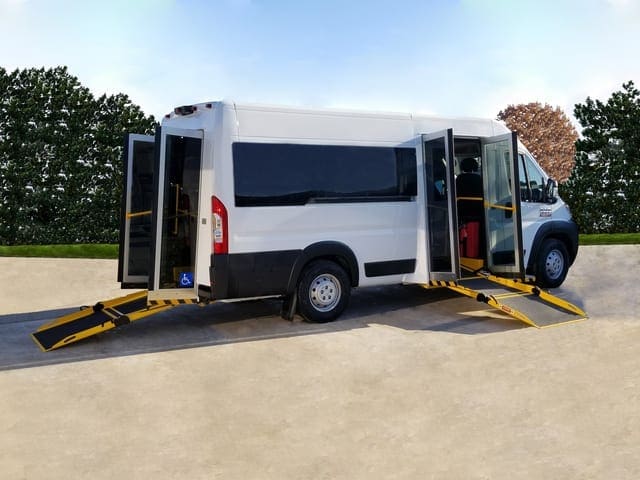
MoveMobility wheelchair accessible van Specification: T6 vs P6 Model
Accessible van conversion
| P6 | T6 | |
|---|---|---|
| Conversion | Dual entry ramps with rear and side entry bus-style doors | Rear curbside lift with side entry ambulatory access |
| Non-modified chassis | Yes | Yes |
| Wheelchair entry | Side and rear entry ramps | Wheelchair lift |
| Ramp/lift | BraunAbility heavy-duty transit ramp | BraunAbility heavy-duty transit lift |
| Ramp/lift door entry | Full height bus-style glass doors for wheelchair and walk-on rider entry | Dual leaf-opening doors designed specifically for wheelchair lift |
| Ramp/lift weight rating | 1,000 lbs | 1,000 lbs |
| Ramp/lift has manual backup | Yes | Yes |
| AutoFloor (aluminum) | Yes | Yes |
| Removable seating | Yes | Yes |
| Lowered floor | No | No |
| Seating capacity | Up to 10 persons | Up to 10-14 persons* |
| Wheelchair capacity | Up to 3 | Up to 4-5* |
| Driver licensing | No additional driver’s license is required** | Yes, a Class X/X driver’s license is required** |
**Varies by provincial licensing requirements. Always verify your province’s legal requirements.
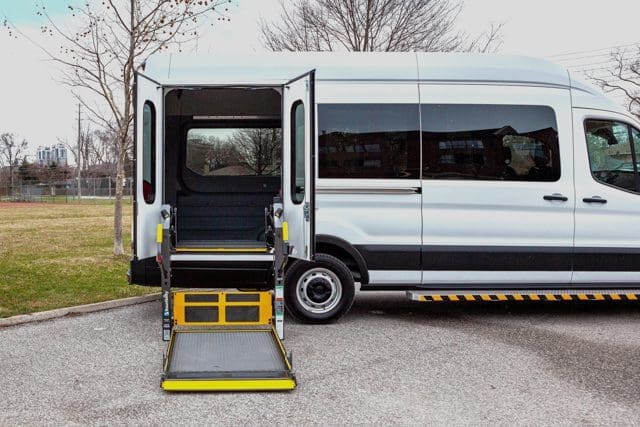
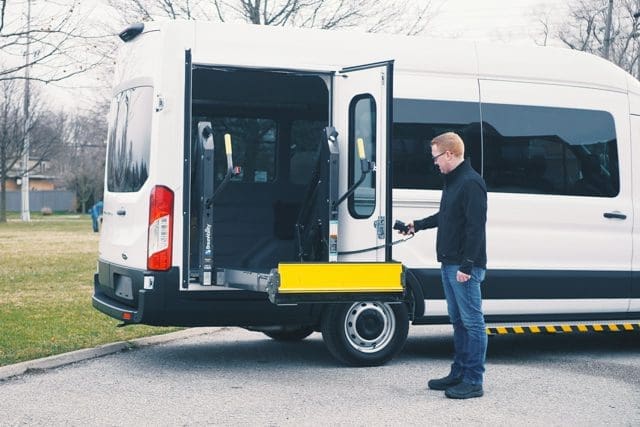
Wheelchair bus alternative: Wheelchair and walk-on passenger access
The P6 and T6 conversions have different passenger access. Depending on your clients’ mobility needs and types of wheelchairs used, the P6’s ramp entrance may be more appropriate than the T6’s lift, and vice versa.
| P6 | T6 | |
|---|---|---|
| Ambulatory entrance location | Side or rear ramps, stowed or deployed | Passenger side sliding door |
| Barrier-free/step-free entry | Yes | No |
| Promotes mobility rider independence | Yes; ramp entrance allows users to enter independently if desired | No; wheelchair users enter using the lift |

Most common applications for the P6 and T6
The P6 and T6 offer different experiences for both riders and drivers. If your program needs a van that allows all passengers to enter quickly and safely, the P6 may be the best fit. On the other hand, if your drivers and clients are accustomed to using cutaway buses, they may find the T6 layout more familiar.
| P6 | T6 | |
|---|---|---|
| Most common application | On-demand community transit – dual entry makes loading and unloading passengers fast Programs that need dual entry flexibility |
Programs that prefer a cutaway bus-style layout Programs requiring 5 wheelchair capacity Programs downsizing from the cutaway bus without losing function/layout Programs need lower bus operating costs (achieved through a van chassis) Great for oversized wheelchairs |
P6 and T6 Costs
The P6 and T6 are built on the Ram Promaster and Ford Transit, respectively. While the vehicle conversions are configured differently, the overall costs are typically similar. For a detailed proposal that includes the features and layout that suit your program, reach out to our mobility experts using the button below.
| P6 | T6 | |
|---|---|---|
| Budget range | $120,000-$150,000 depending on configuration | $120,000-$150,000 depending on configuration |
Conclusion
Now that you have reviewed the comparison of the P6 and the T6, you may have come to a conclusion on the best bus replacement option for your program. As you can see, finding the accessible van that will suit your program best mostly comes down to your riders’ mobility needs and how the vehicle will be used.
If you still aren’t sure what type of accessible van your program needs, contact us at 844-951-3808 or by using the button below:
If you’d like to learn more about what to consider when buying a mobility van for your organization, visit our Resource Centre.


